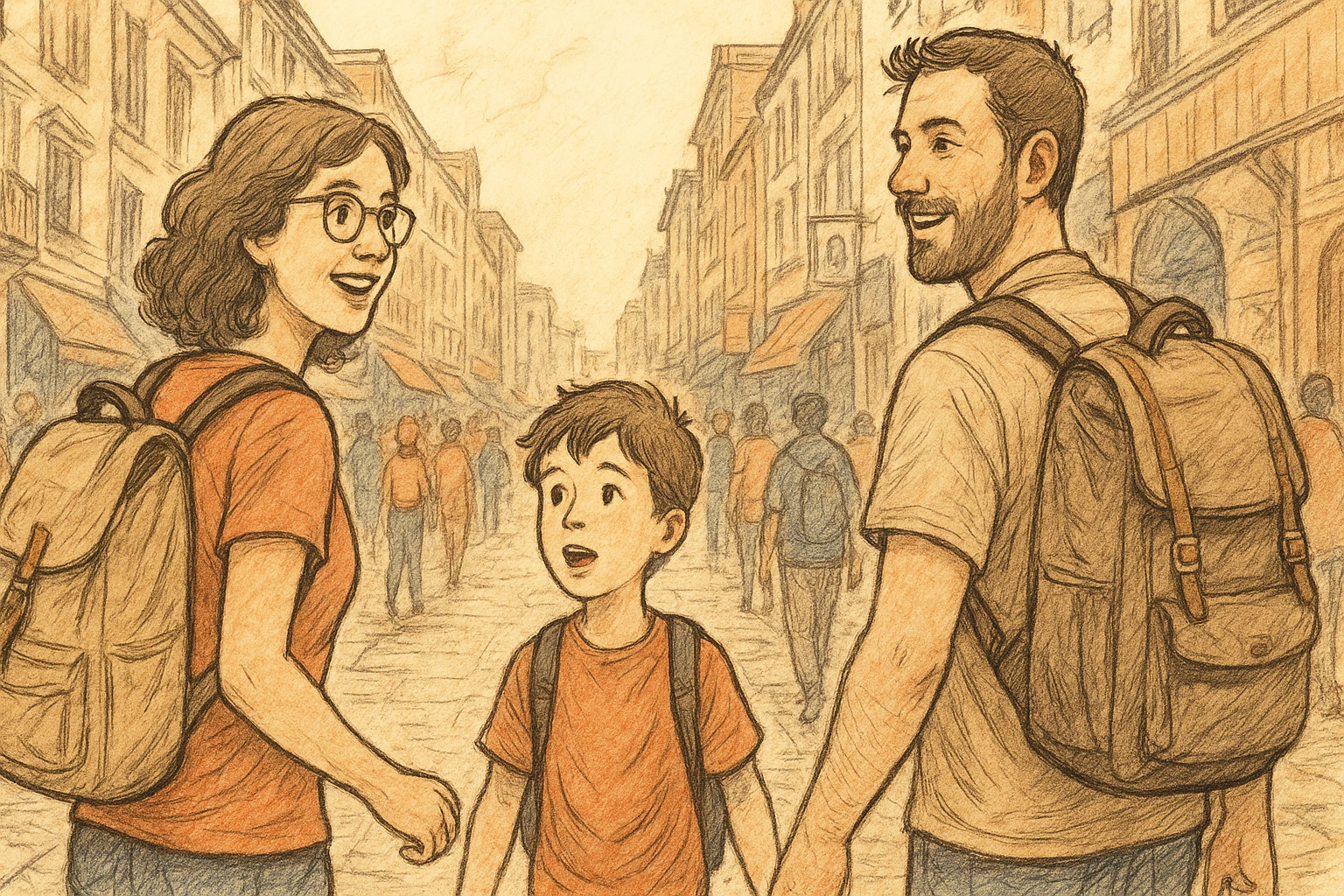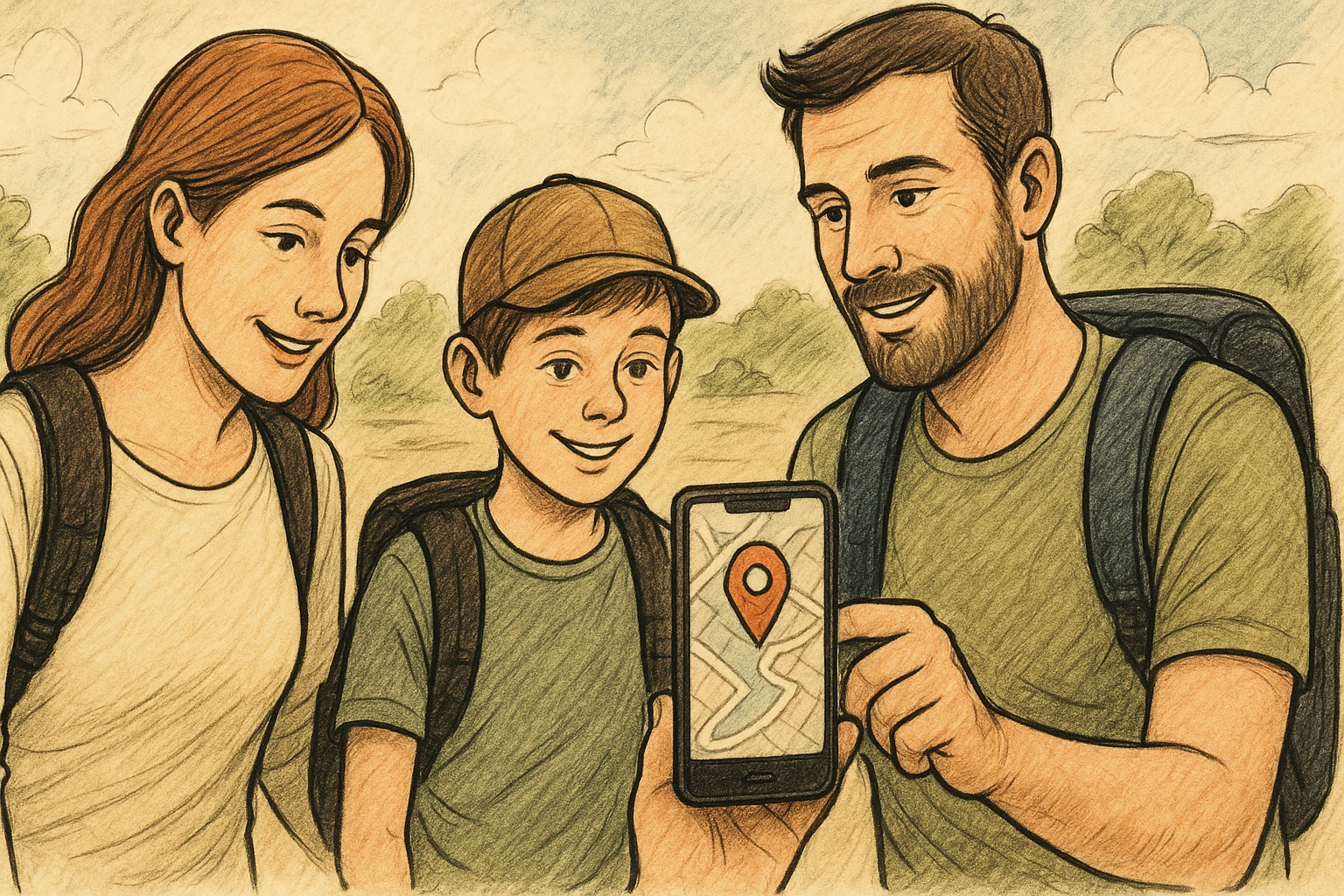Planning a family vacation can be both thrilling and overwhelming. Whether you’re dreaming of sun-drenched beaches, exploring ancient cities, or simply spending uninterrupted time with your kids, a well-prepared trip is the key to success. Parents E-Guide brings you a comprehensive roadmap to help you avoid common travel hiccups and turn your holiday into an adventure filled with laughter, bonding, and cherished memories. From budgeting to safety and a need to track phone by phone number — we cover it all in one article.

1. Define Your Family’s Vacation Goals and Budget
Every successful family vacation begins with clear intentions. What do you want to gain from the trip? Relaxation, education, excitement—or a mix of all three? Before booking flights or hotels, gather your family for a short planning session. This isn’t just about logistics—it’s about creating a shared vision. Ask questions like:
- Do we want to explore nature or visit a bustling city?
- Are we celebrating something special?
- What activities are a “must” for each family member?
Once preferences are on the table, it’s time to talk budget. Planning financially is where many family vacations go off track. Use a simple breakdown to manage expectations and avoid unexpected costs:
| Category | Estimated Budget Allocation |
| Transportation | 30–35% |
| Accommodation | 25–30% |
| Food & Dining | 15–20% |
| Activities & Tickets | 10–15% |
| Emergency Fund | 10–15% |
Pro Tip: Always build in a buffer—an emergency fund of 10–15% will protect your wallet from sudden changes, missed connections, or last-minute splurges. Planning this early also helps you hunt for discounts, early-bird packages, and family bundle deals.
2. Choose Family-Friendly Accommodations
Where you stay shapes your entire vacation. A poorly chosen hotel or rental can turn a dream trip into a logistical nightmare, especially when traveling with kids. Family-friendly accommodations are not just about size—they’re about convenience, comfort, and safety.
Key Features to Look For:
- Kitchen Facilities: Save money and time by preparing simple meals or snacks.
- Laundry Access: Especially useful for longer stays or vacations involving outdoor activities.
- Child-Proofing Options: Check if the property offers socket covers, safety gates, or crib rentals.
- Recreational Amenities: Pools, kids’ clubs, play areas, and game rooms go a long way in keeping children entertained during downtime.
Also, evaluate the location. A central place near attractions and public transport reduces stress and travel time. Use Google Maps to check:
- Walking distance to restaurants and parks
- Access to supermarkets or pharmacies
- Proximity to medical facilities in case of emergencies
Bonus Checklist Before Booking:
- Read recent family reviews
- Check cancellation policies
- Confirm check-in times (especially if traveling with young kids needing naps)
Choosing the right base camp sets the tone for your entire vacation. It’s not just about where you sleep—it’s about where you feel safe, recharged, and ready for more adventures the next day.
3. Plan Your Travel Logistics and Documents Early
One of the biggest sources of vacation anxiety is paperwork—and it’s completely avoidable. The secret? Start organizing travel documents at least three weeks before departure.
Must-Have Travel Documents (Keep in One Folder or Pouch):
- Passports (check expiration dates!)
- Government-issued IDs
- Travel insurance cards/policies
- Health documents (vaccination certificates, prescriptions)
- Emergency contact list
- Printed copies of tickets, hotel bookings, and car rental confirmations
Create a digital backup by storing scanned copies on your smartphone or cloud account. Some families also carry a USB drive as a physical backup.
Transportation Logistics Checklist:
| Task | Details |
| Airport Transfers | Pre-book taxis or shuttles, especially for late arrivals |
| Car Rentals or Car Seats | Reserve early; double-check child seat requirements |
| Local Transit (passes or apps) | Research discount cards or city transport apps |
| Time Zone & Jet Lag Considerations | Schedule rest days if traveling long distances |
Family Travel Hack: Assign one adult to be the “document carrier” and another to manage digital check-ins. This division of roles avoids confusion during airport or hotel check-ins and keeps the kids focused.
4. Prioritize Safety with Technology
Safety comes first—especially when traveling with children or elderly family members. While traditional methods like ID wristbands or emergency whistles still work, smart parents are now adding digital tools into their safety kits.
🔐 Enter the Number Tracker App
This powerful app allows you to track a phone by number, making it an excellent backup if anyone gets separated in a crowd, market, or museum. The app is especially useful in:
- Busy transportation hubs
- Amusement parks
- Open beaches or hiking trails
- Shopping districts and tourist attractions
You can discreetly monitor your child’s or teen’s location without needing constant supervision or pestering. The Number Tracker app also supports real-time updates, so you know where each device is at any moment.

Other Safety Essentials:
- Location-sharing apps (Google Maps, Life360)
- Portable battery packs
- Child ID cards with photos and emergency contact details
- Medical alert bracelets (if needed)
Technology doesn’t replace supervision—but it adds a strong layer of security that eases your mental load. Use it smartly and stay one step ahead of potential problems.
5. Pack Smart and Start Early
Packing for one person is easy—packing for a family of four or more? That’s an operation.
Start by preparing individual checklists for each family member. Include categories like clothes, toiletries, electronics, medication, and special items (e.g., swim gear, hiking boots, baby wipes). For kids, add comfort objects like a favorite toy, pillow, or bedtime storybook.
Sample Packing List for a Toddler:
| Category | Items |
| Clothing | 5 outfits, 2 pajamas, 1 jacket, swimwear |
| Hygiene | Diapers, wipes, shampoo, lotion, toothbrush |
| Medications | Fever reducer, band-aids, any prescriptions |
| Comfort Items | Favorite toy, blanket, pacifier |
| Entertainment | Picture books, tablet with headphones |
Start packing one week in advance, especially if you’ll need to shop for weather-specific gear, refill prescriptions, or replace worn-out shoes. This gives you time to:
- Wash clothing
- Charge electronics
- Order missing items online
- Check luggage weight limits
Bonus Tip: Pack a carry-on survival kit that includes snacks, water bottles, basic medications, and a change of clothes for each child. If your luggage is delayed, you’ll still have the essentials.
6. Prepare Kids for Travel
A vacation isn’t just a new location—it’s a new rhythm. For kids, this disruption can be exciting, but also overwhelming. Help them adjust by introducing elements of the trip in advance.
How to Prepare Kids Before Departure:
- Talk About the Trip: Show them maps, photos, or videos of the destination. Let them help choose activities to feel included.
- Explain the Travel Process: Describe what airports, airplanes, train rides, or road trips will be like. This reduces fear of the unknown.
- Set Expectations: Discuss behavior rules, safety guidelines, and schedules (e.g., “We’ll rest after lunch,” or “Museum first, then ice cream”).
In-Transit Engagement Ideas:
| Age Group | Entertainment Ideas |
| Toddlers | Soft toys, picture books, snack bags |
| School-age Kids | Puzzle books, coloring sets, travel games |
| Teens | Downloaded movies, music, audiobooks, mobile games |
Don’t Forget: Familiar comfort items like a pillow or stuffed animal can make sleeping in new places easier for younger children.
Plan breaks into long travel days. Kids have different stamina levels than adults. Letting them stretch, snack, or explore between transitions can prevent meltdowns.
7. Plan Balanced Activities for All Ages
A family trip means everyone should feel seen and heard—from toddlers to grandparents. The trick lies in crafting a schedule with a variety of experiences, balanced by rest and spontaneity.
Tips for Creating a Family-Friendly Itinerary:
- Rotate Priorities: Assign a day (or a part of the day) for each family member’s chosen activity.
- Mix It Up: Alternate high-energy outings (theme parks, hikes) with relaxed experiences (museum visits, beach time).
- Schedule Free Time: Leave a few hours open each day for unplanned discoveries, pool time, or naps.
- Backup Plans: Always have rainy-day alternatives. Indoor play zones, science centers, hotel activities, or local libraries are great options.
Consider creating a visual itinerary (using a whiteboard or printed schedule) that you can post in your accommodation. Kids love knowing what’s next, and it helps them mentally prepare.
Conclusion: Your Family Deserves a Vacation That Works
A great family vacation doesn’t happen by chance—it’s crafted with care, communication, and smart planning. From defining your travel goals and budgeting wisely, to choosing the right accommodations and packing strategically, every step plays a role in creating a seamless experience.
Leveraging tools like the Number Tracker app adds an extra layer of confidence, especially when you’re in unfamiliar surroundings. Technology is your ally in keeping your loved ones close, secure, and connected—no matter where the journey leads.
Final Checklist Before You Go:
- ✅ Everyone’s documents packed
- ✅ Accommodation and transit confirmed
- ✅ Number Tracker app installed and tested
- ✅ Kids briefed and engaged
- ✅ Itinerary printed or saved
- ✅ Backup plans in place
Ultimately, the most valuable souvenirs from any vacation are the moments you spend laughing, exploring, and simply being together. Take time to enjoy them—after all, that’s what a family vacation is really about.
